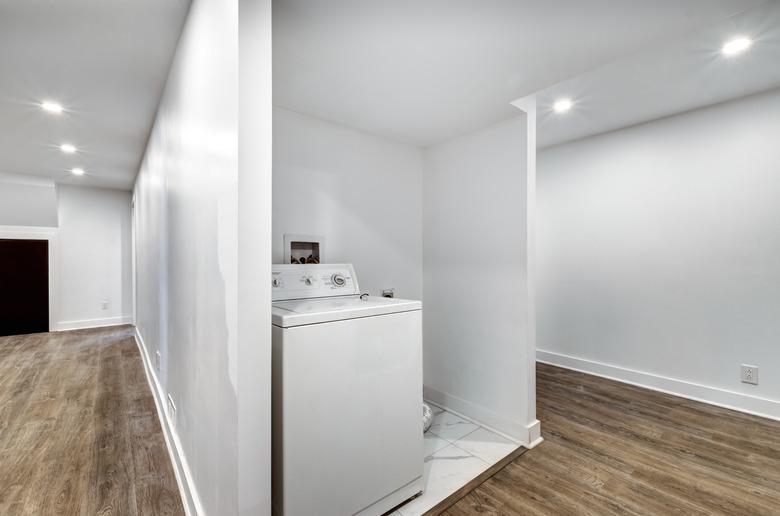How To Build A False Wall
We may receive a commission on purchases made from links.
A false wall is an effective way to screen off an area from view. False walls are often used in high-end home entertainment systems to install projection screens and to conceal speakers. However, a false wall can also be useful for obscuring plumbing pipes and electrical conduit in a laundry room or basement. Since the primary purpose of a false wall is to obscure an area from view, they do not need to be load-bearing and are a bit simpler to construct than ordinary partition walls.
Things Needed
-
2x4 studs
-
Pencil
-
16D nails
How to Build a False Wall
1. Cut the Wall Plates
Measure the length of the wall you'd like to build and cut two 2x4s to this dimension. These will be the base plate and top plate for the wall. Line up the two pieces side by side and ensure that they are exactly the same length.
2. Cut the Outer Studs
Determine the finished height of the wall and then subtract 3 inches to accommodate the width of the top and base plates (2x4 lumber is actually 1.5 x 3.5 inches). Cut two studs to this height and check to be sure they are the same length by lining them up side by side.
3. Form a Frame
Lay the plates and studs on the floor to form a rectangular frame, setting all pieces on their short sides.
4. Assemble the Frame
Nail the frame together by driving two nails into each joint (you can also use 3 1/2-inch screws instead of nails if desired). Drive the nails through the face of the top and base plates into the ends of the studs. Use a carpenter's square to ensure that the studs are at right angles before joining them.
5. Mark the Stud Layout
Mark the top and base plates every 16 inches for placement of interior studs.
6. Add the Interior Studs
Cut additional studs to the same dimension as the two outer studs. Place each stud on a set of layout marks and fasten each end with two nails or screws. If desired, paint the false wall frame black if you will cover it with acoustical fabric.
7. Anchor the Frame
Use a stud finder to locate a stud in an existing wall to which you will anchor the false wall. Mark both side edges of the stud. Position the false wall frame against the existing wall with the end of the false wall aligned with the stud in the existing wall. Nail or screw the outer stud of the false wall to the stud in the existing wall.
8. Finish the False Wall
Cover the frame with acoustical fabric if the wall is part of a home-theater system. If the wall is being used to obscure pipes or electrical conduit, cover the front of the frame with drywall and then finish and paint it as desired.
Warning
Always exercise caution when operating power tools.
